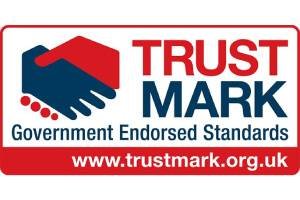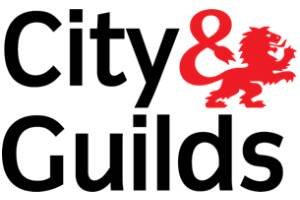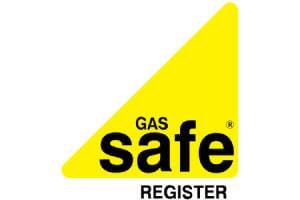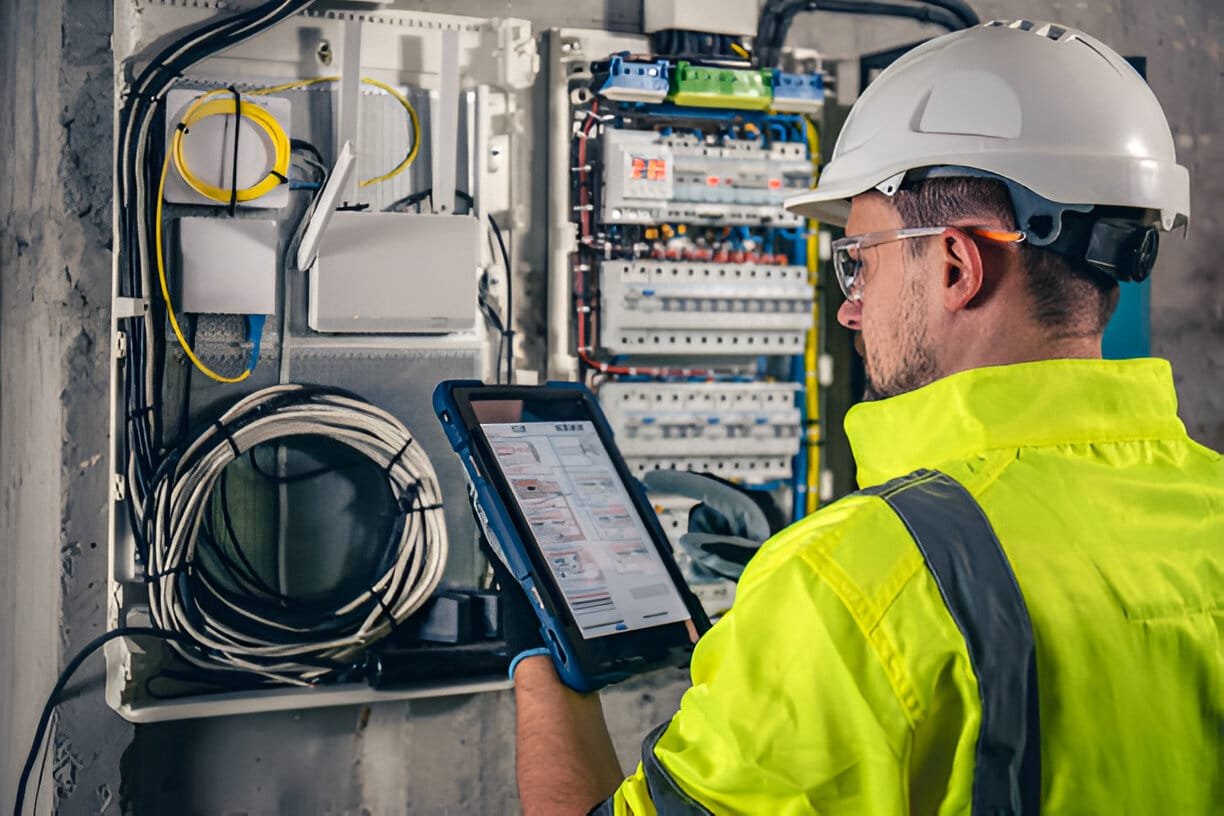
The EICR C2 Code signifies that enhancements are needed in the electrical installation. Although it indicates a moderate risk, it isn’t an immediate threat. Property owners should understand the implications of this code. Common problems linked to a C2 designation often go unnoticed. What actions should be taken to address these concerns effectively? The key is to recognise the importance of acting promptly and understanding the possible outcomes of neglect.
Main Points
- The C2 code, labelled “Improvement Required,” indicates a moderate risk in electrical systems that requires attention but is not immediately dangerous.
- Common issues causing a C2 code include insufficient earthing, overloaded circuits, and damaged wiring.
- Consulting a qualified electrician is essential to assess and repair C2 code issues accurately.
- Follow-up EICR inspections should be performed within six months of resolving a C2 code to confirm compliance and safety.
- Promptly addressing C2 codes helps ensure legal compliance, prevents risks, and safeguards property owners from legal issues.
What Is an EICR and Why Is It Significant?
An Electrical Installation Condition Report (EICR) serves as an essential assessment of a property’s electrical systems. This report evaluates the safety and performance of electrical installations, confirming their compliance with current regulations and standards.
An EICR is essential for detecting danger like outdated wiring or faulty devices that could endanger occupants. Regular inspections, usually every three to five years, ensure safety and compliance, especially in rental properties where landlords are legally required to maintain safe electrical systems.
Besides safety, an EICR can increase property value by showing a commitment to proper upkeep. Homebuyers and tenants frequently seek reassurance that the electrical systems have been properly inspected and deemed safe.
Breaking Down the EICR C2 Code: What Does It Mean?
Understanding the importance of the EICR C2 is essential for both property owners and tenants. The C2 signals the presence of potentially dangerous conditions that require prompt attention. While not an immediate danger, it suggests that improvements are needed to maintain safety and meet electrical standards.
| Aspect | Description | Importance |
|---|---|---|
| Definition | Code indicating “Improvement Required” | Highlights need for action |
| Risk Level | Moderate risk; not immediately dangerous | Urgent repairs needed |
| Compliance | May violate electrical safety regulations | Essential for legal adherence |
| Recommended Actions | Professional assessment and rectification | Guarantees safety and reliability |
| Follow-up | Regular inspections to prevent future issues | Maintains long-term safety |
Ensuring it is met guarantees that electrical systems stay safe and work properly, ultimately protecting both property and its occupants.
Common Electrical Issues That Trigger a C2 Code
Electrical systems are complex and may develop various issues, resulting in a C2 classification during an Electrical Installation Condition Report (EICR).
Common issues include insufficient earthing and bonding, which can pose safety risks by not properly dispersing electrical faults.
Overloaded circuits often happen when multiple appliances draw power from the same circuit, increasing the risk of overheating.
Additionally, damaged or frayed wiring can expose live conductors, posing a threat.
Faulty circuit breakers or fuses that fail to trip during overloads can also cause a C2 code, signalling a higher risk of electrical failure.
Moreover, moisture in electrical fittings or connections can lead to corrosion, raising the risk of faults.
Promptly identifying and addressing these issues is integral for ensuring electrical safety and adhering to regulations.
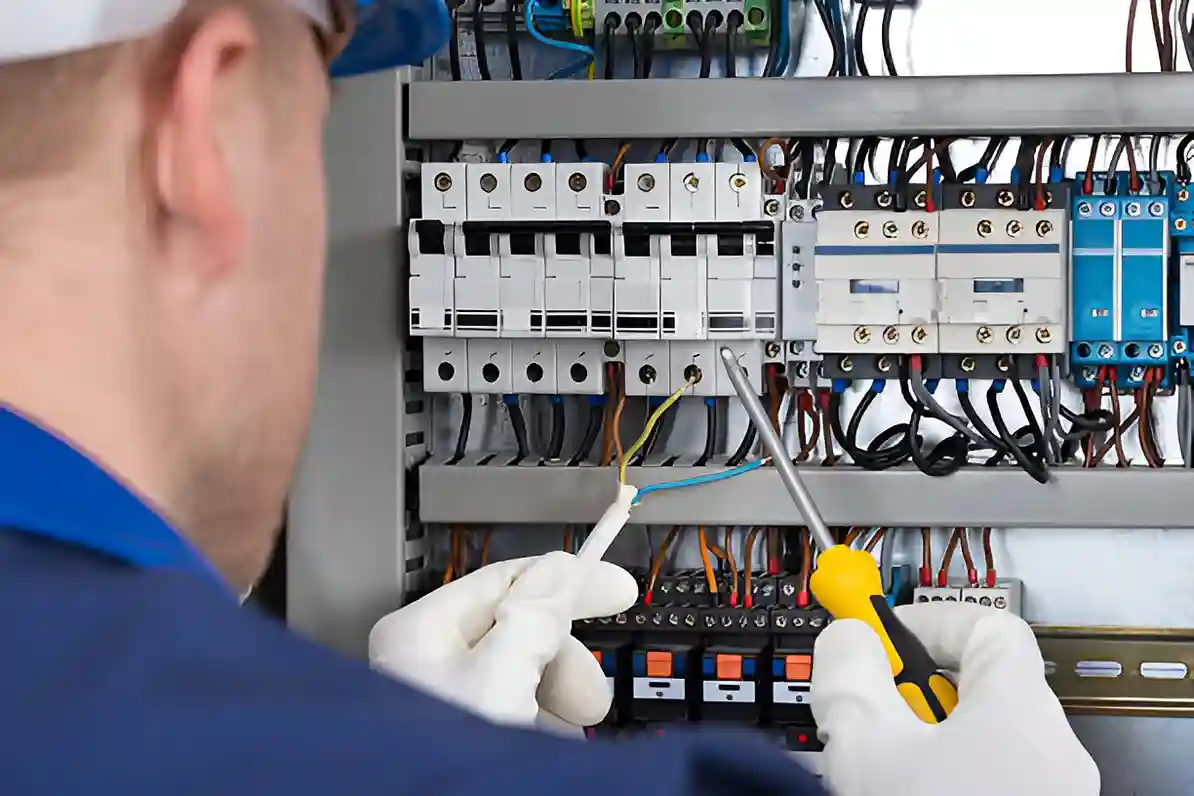
Is a C2 Code Dangerous? Here’s What You Need to Know
C2 signifies dangerous conditions in an electrical system that demand immediate attention. This classification underscores issues that could present risks, such as electrical shocks, fire risks, or equipment failure.
The detection of a C2 indicates that immediate action is required to address these risks and ensure safety. Common reasons for a C2 include faulty wiring, inadequate earthing, or outdated electrical installations. These issues can compromise the integrity of the electrical system and pose a risk to occupants.
Property owners need to recognise the significance of a C2. Ignoring these signals can lead to serious consequences, affecting not only the property but also the safety of people using the electrical systems.
Prompt action by qualified electricians is integral to address the problems related to a C2 and ensure a safe environment.
What Happens If You Ignore a C2 Code on Your Report?
Neglecting a C2 on an electrical report can have serious repercussions beyond simple compliance problems. A C2 signals a potentially dangerous situation that demands immediate action. Overlooking this code may lead to safety dangers such as electrical shocks or fires, endangering people.
Additionally, property damage can occur due to faulty wiring or equipment. Failing to address a C2 may also have legal consequences, especially if an electrical fault causes an accident. Insurance claims might be rejected if it is proven that maintenance was neglected, leaving the property owner financially responsible.
Furthermore, ignoring such warnings can reduce the resale value of a property, as prospective buyers may seek assurance of electrical safety.
Ultimately, promptly addressing a C2 is essential to ensure safety, compliance, and the integrity of the electrical system.
How to Fix EICR C2 Code Faults: Your Options Explained
When a C2 appears in an EICR report, addressing the related faults promptly is essential for safety and compliance. This code typically indicates a potential problem that requires prompt remedial action but isn’t immediately unsafe.
Homeowners and property managers have various options for fixing C2 faults. First, consulting a qualified electrician is essential, as they can evaluate the situation and suggest suitable repairs. This might include replacing outdated wiring, upgrading circuit breakers, or enhancing earthing arrangements to improve safety.
Furthermore, it is primary to prioritise maintenance practices, including regular inspections and updates to electrical systems, which can prevent future problems. Documentation of all repairs is also necessary, as it can assist in future inspections and ensure compliance with safety standards.
C2 vs C1 and C3: Understanding the Difference in EICR Codes
The EICR (Electrical Installation Condition Report) categorises electrical issues into three primary codes: C1, C2, and C3.
C1 code signals an immediate danger requiring prompt action to avert electrical hazards like shocks or fires.
In contrast, C2 indicates a problem that is not immediately dangerous but demands prompt attention to prevent future dangers. This might include issues such as exposed wiring or insufficient earthing.
Finally, C3 highlights recommended improvements that are not considered unsafe, such as outdated equipment that does not meet current standards.
Understanding these distinctions is essential for property owners and managers to prioritise repairs effectively and ensure the safety of electrical installations. Each code acts as a guide to the urgency and type of issues within an electrical system.

How Much Does It Cost to Resolve a C2 Code Issue?
Addressing a C2 issue often involves costs that can vary considerably based on the nature and extent of the problem. Typically, the resolution may include repairs, replacements, and additional inspections, which can impact the overall expenditure. Below is a breakdown of common costs associated with resolving a C2 code issue:
| Service Type | Estimated Cost Range | Description |
|---|---|---|
| Electrical Repairs | £100 – £500 | Fixing faulty wiring or components |
| Equipment Replacement | £200 – £800 | Replacing outdated or unsafe units |
| Additional Inspections | £50 – £150 | Follow-up testing and certification |
| Safety Upgrades | £150 – £600 | Enhancements to meet regulations |
| Consultation Fees | £50 – £200 | Expert advice on compliance |
These figures offer a general guideline, as actual costs depend on specific circumstances and local market conditions.
When Should You Book a Follow-Up EICR After a C2 Fix?
After resolving a C2 issue, scheduling a follow-up Electrical Installation Condition Report (EICR) is necessary to ensure that all repairs and upgrades have been correctly carried out.
Ideally, this follow-up should take place shortly after the initial repairs, usually within six months. This timeframe allows for any potential issues to be identified early, ensuring that the electrical system remains safe and compliant.
If significant changes or updates have been made to the electrical installation, a follow-up EICR should be prioritised to confirm the effectiveness of these alterations.
If significant changes or updates are made to the electrical installation, it’s essential to schedule a follow-up EICR to verify these modifications’ effectiveness. Property owners should also consider arranging an EICR before the next routine inspection, which typically occurs every five years or when the occupancy changes.
Regular checks help maintain safety standards and ensure that previous C2 issues do not reoccur, creating a safer living or working environment.
Staying Compliant: Why Acting on a C2 Code Matters
While it might be tempting to ignore the implications of a C2, acting quickly is essential for ensuring compliance with safety regulations. C2 in EICR signifies a hazard that needs to be fixed to maintain electrical safety. Neglecting to respond to these codes can lead to severe dangers, such as electric shocks or fires, which can endanger both lives and property.
Acting on a C2 not only protects individuals but also shields property owners from legal repercussions. Adhering to safety standards builds credibility and trust with tenants or clients.
Furthermore, tackling these issues quickly can avoid more costly repairs later on. Regular inspections and prompt action help create a safer environment, in line with best practices in property management.
Ultimately, understanding and addressing a C2 promotes safety and responsibility, ensuring that all electrical systems function efficiently and securely.
Frequently asked questions.
Conclusion
In conclusion, responding to an EICR C2 code is integral for maintaining electrical safety. Although not immediately unsecure, the issues it indicates require prompt attention from a qualified electrician to prevent potential risks. After completing the necessary repairs, it is important to schedule a follow-up EICR within six months to ensure that the improvements comply with safety standards. Responding to a C2 in EICR helps property owners safeguard their investment and promote a safer living space.


